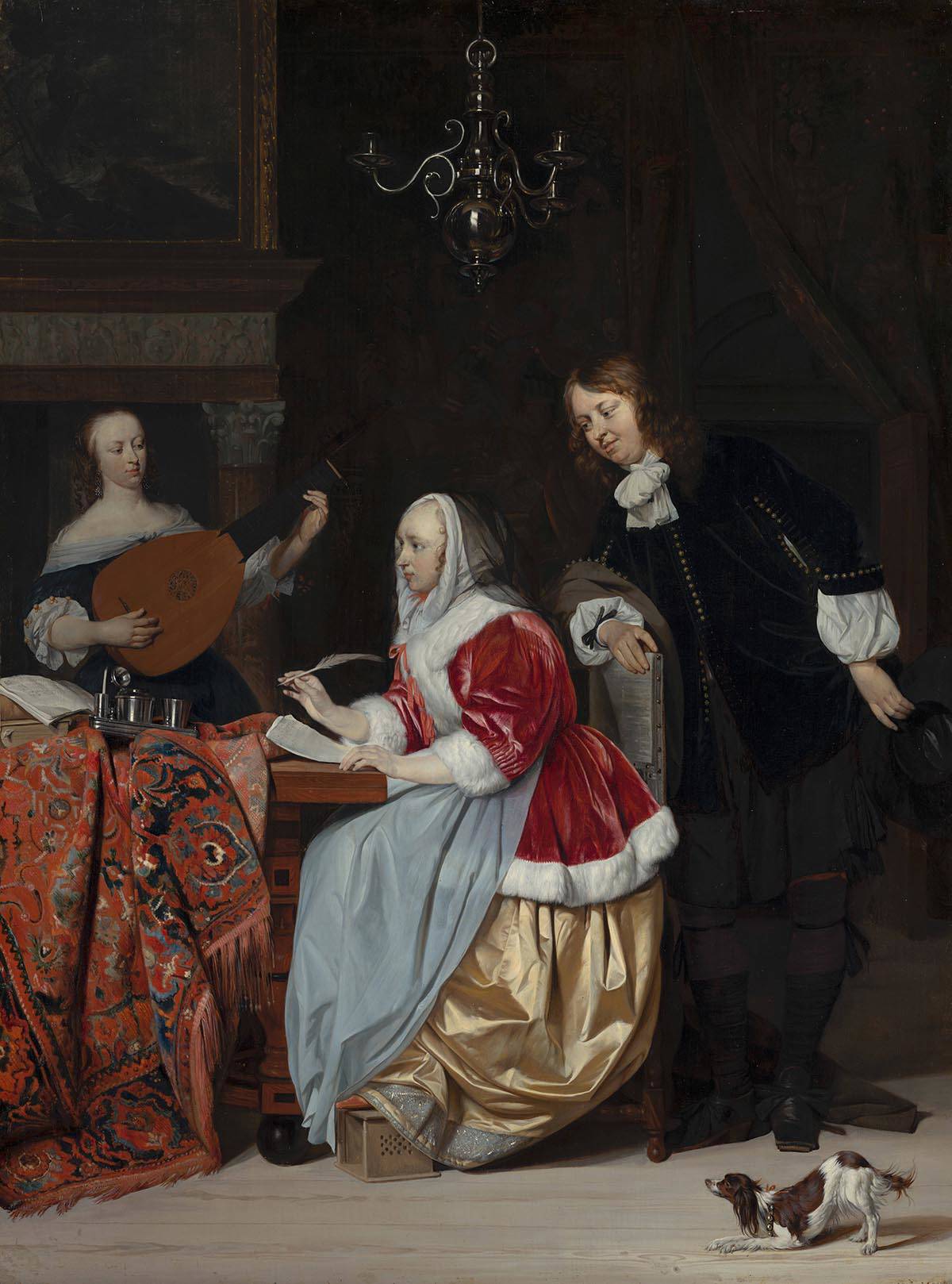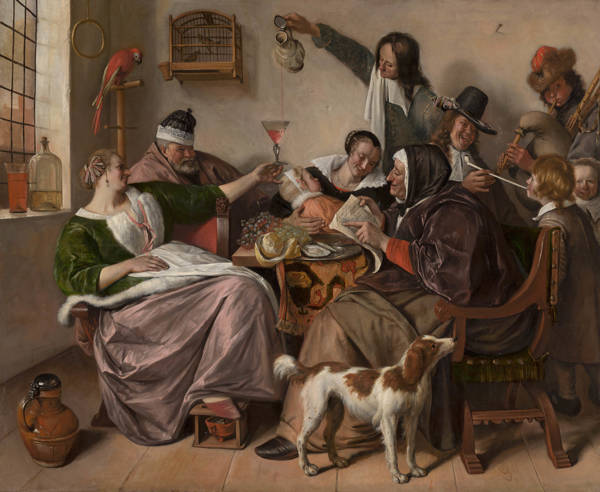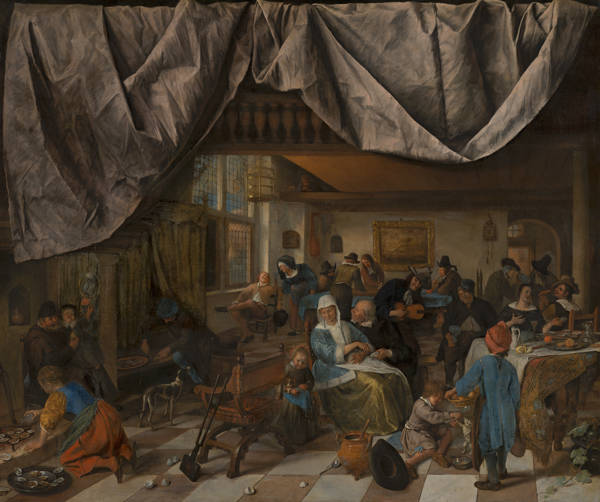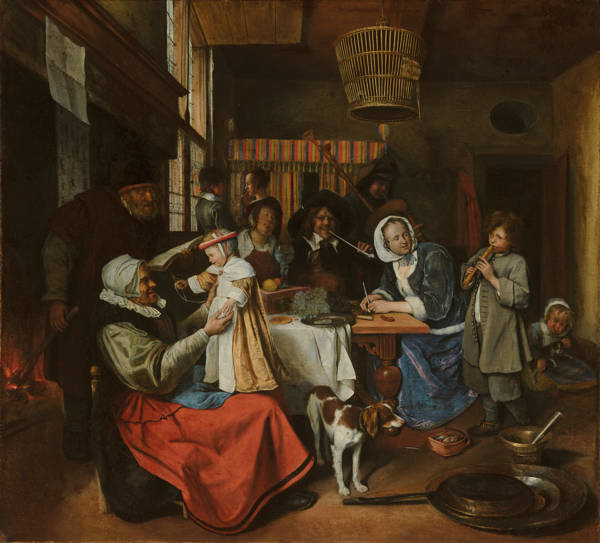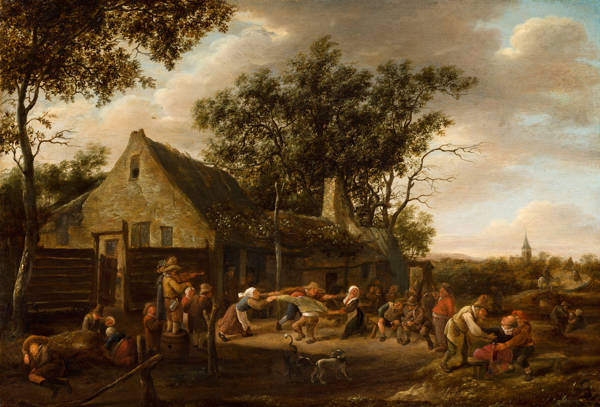Genre paintings
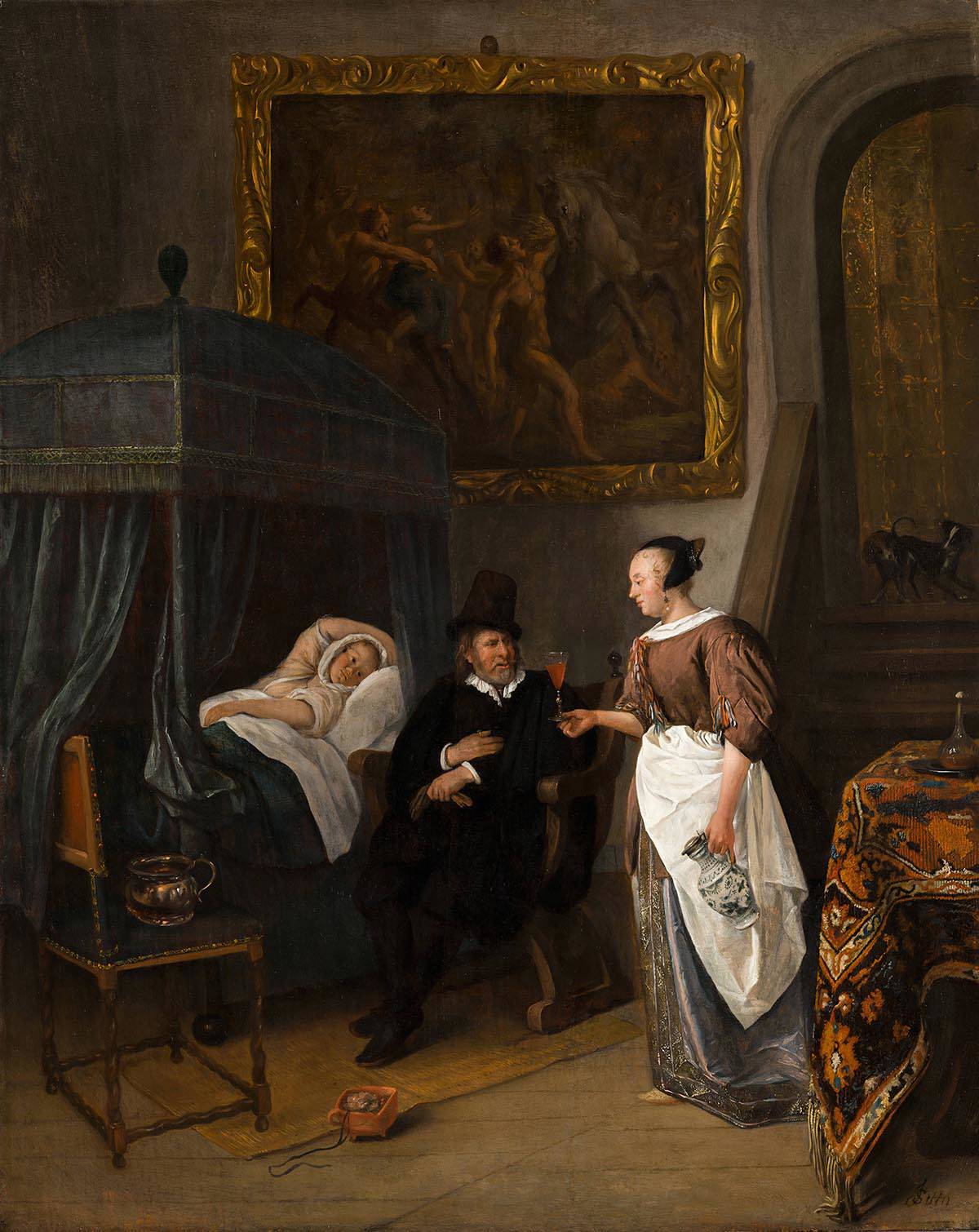
After 1600, everyday scenes became an established genre in painting. In addition to kings and biblical stories, painters also began painting what went on in kitchens, crowded taverns, and busy markets. We call them genre paintings: art that offers a glimpse of ordinary life at that time. But appearances can be deceiving! These everyday scenes often hide a deeper meaning.
Snapshot
You may think that genre paintings look a little chaotic at first sight. This is because, like a snapshot, a genre painting captures a fleeting moment, with everyone frozen in mid-action. These paintings were very popular simply because they were so much fun to look at. They were relatable – people recognised themselves and their surroundings. But a genre painting always has a moral (a message). This is cleverly concealed in the details – a toppled glass, a lazy kitchen maid, or a naughty cat. These paintings often illustrate proverbs or sayings, like Jan Steen’s As the Old Sing, so Pipe the Young: bad examples lead to bad behaviours. The woman on the left with the half-open bodice raises her glass for a refill. The laughing father on the right is teaching one of his children to smoke a pipe.
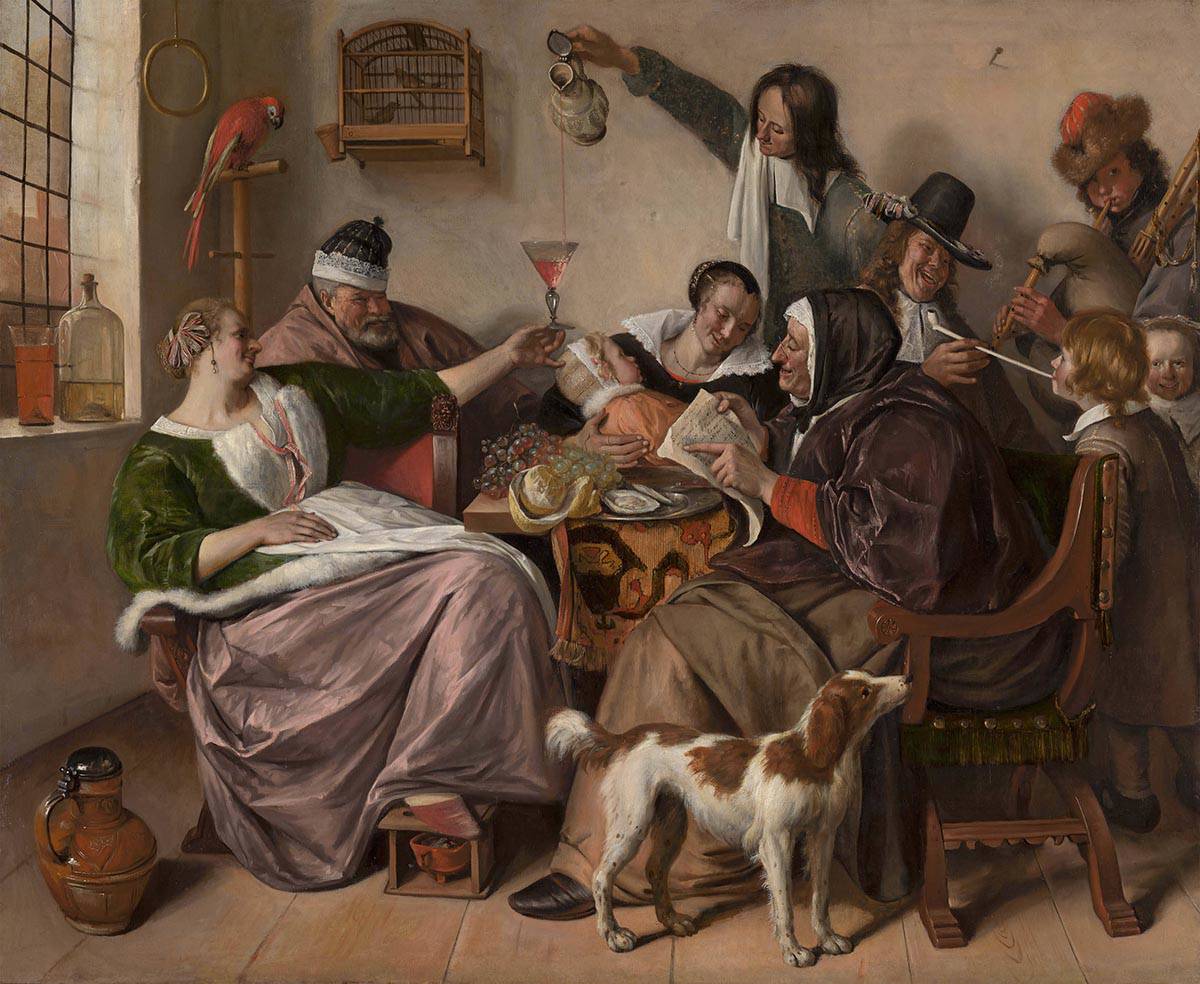
From Pieter Bruegel to Jan Steen
Pieter Bruegel laid the foundations for genre painting in the 16th century with his paintings of peasants, merrymakers and winter landscapes. His work reflected society and warned against things like idleness and stupidity. His playful, detailed style influenced later painters, including Jan Steen. Steen’s comic scenes of boisterous households, quacks, and taverns packed with revellers were so well-known in his day that ‘a Jan Steen household’ – which means something like ‘a chaotic household’ – became a Dutch idiom.
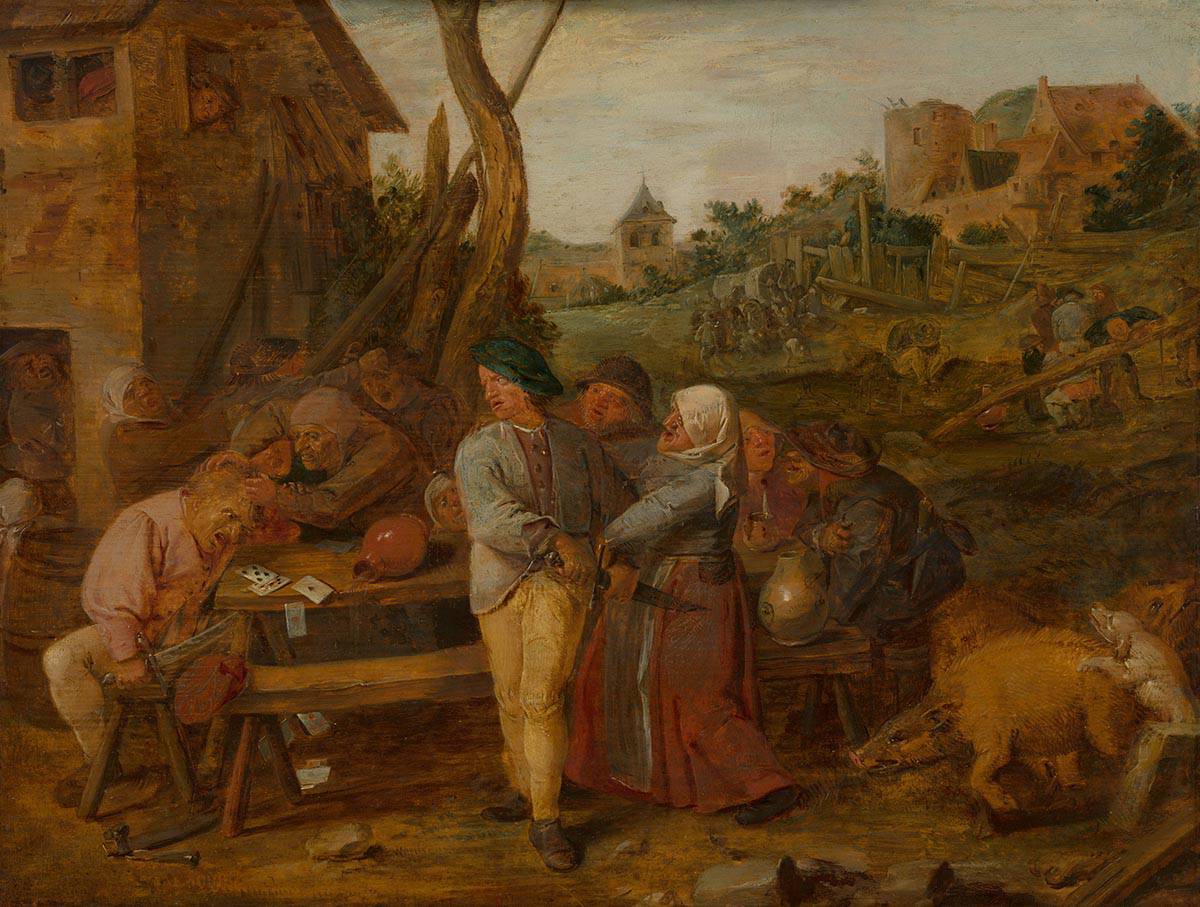
Streets and salons
Genre paintings offer a glimpse into the daily lives of people across the social spectrum. For instance, paintings by Adriaen van Ostade and Adriaen Brouwer on view in the Mauritshuis show peasants in rural settings or taverns – often disorderly, and with a lot of humour. In contrast, artists like Gabriel Metsu depicted the well-to-do in their lavish villas. He shows them playing music, flirting, and sipping a glass of wine.
